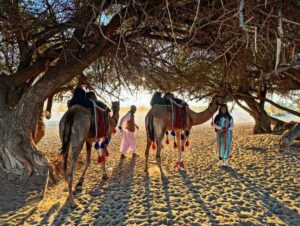They rode 95 percent of the time, but as usual, the five percent made the best stories.
Endurance athlete Rebecca Rusch, photographer Chris Burkard and retired professional cyclist Angus Morton have just biked from north to south across central Iceland, unsupported.
The trio set out from Stora Brekka, near Iceland’s northern tip, on April 1. On April 9, averaging 60 to 70km a day, they made it to the south coast. Even more remarkably, they rode 95 percent of the time, pushing only five percent.

Rebecca Rusch and her bike. Photo: Ryan Hill
But that five percent loomed large: They endured storms with 100kph winds. “The winds were so severe that putting our heads down, digging our boots in, and pushing our bikes…were the only things we could do,” said Rusch.
They trudged up mountains and glaciers as high as 900m while battling side winds in -20˚C. On their second day, they spent five hours (of a 14-hour day) pushing their bikes. Another time, they pushed for six hours up a glacier near Maelifell, a popular volcano.

Some of the five percent. Photo: Instagram
In general, their expedition ranged from perfect snow to barely rideable. They also crossed freezing rivers, deep valleys, and highlands. They looked for windows of opportunities they called supercrusts, a crunchy top layer of snow created by a succession of thawing and freezing. This “frozen yet not bulletproof ice” allowed them to ride without much walking. Luck seemed to be on their side. “Fat biking and any form of fat bike expedition is 100 percent snow dependent,” said Burkard.

The “push” from Myrdalsjokull Glacier Crossing to Vick. Photo: Ryan Hill
Occasionally, Rusch, Burkard, and Morton averaged almost eight kilometres an hour but usually, they made their daily distance by putting in mega-hours. By the end of it, Rusch’s Giant Yukon bike had taken quite a beating. But they soldiered on, and on April 9, they reached the Dyholaey Lighthouse, almost the southernmost point of Iceland, and the end of their expedition.






